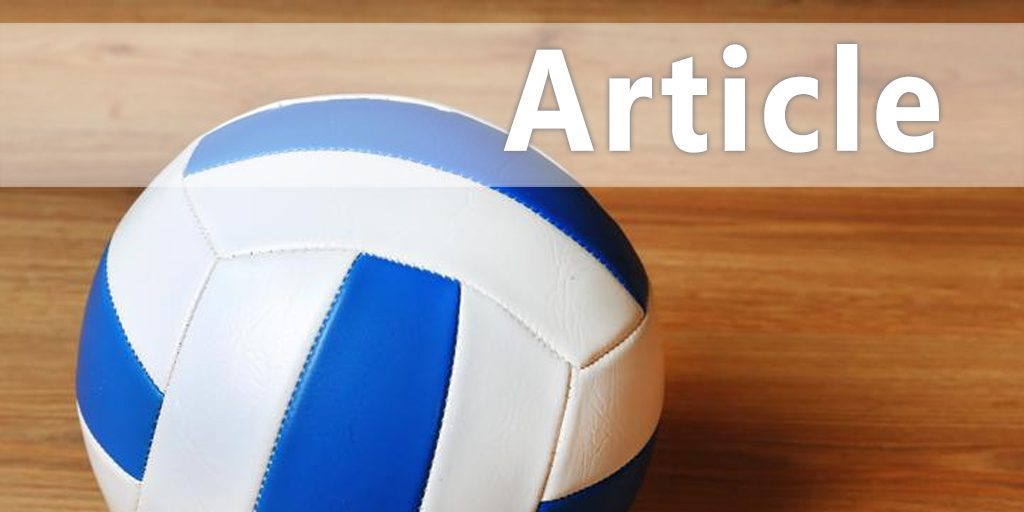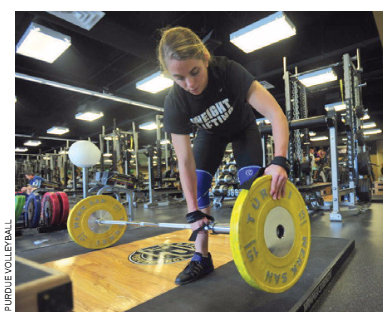| Does Playing Too Much Volleyball Lead to Injury? |
| By: Ken Kontor
Originally Published in: Coaching Volleyball Magazine Provided by: AVCA Question: I am a high school and club coach in Ohio, and I am looking for guidelines from USAV for how many matches a junior athlete should play in a club season. I am concerned about overuse injuries associated with playing too many matches in a season. Thank you for your help and guidance in this area. D.C. Answer: I'm answering your question as a member of the SMPC and not speaking for or representing the SMPC as a whole. As the publisher of Performance Conditioning Volleyball and, prior to that, the editor of the National Strength and Conditioning Association Journal (NSCAJ) at its inception in 1978, I've seen the issue of injury prevention become a primary concern of the conditioning process. Regardless, injuries still persist at a high level. Creating athleticism through the process of playing multiple sports certainly is a great recommendation, but with a volleyball college scholarship as the end goal, it's a tough sell to parents. Old-school modes of thought said that if you lifted weights that would prevent injury. That premise is still held today by many strength coaches, but I haven't seen much good research to back up this belief. So what is there to do? Two Recommendations To prevent injuries you have to understand the causes. Certainly, playing too much volleyball can lead to an overuse injury. But how much is too much? Little League Baseball (a side-dominant sport similar to volleyball) has implemented a pitch count for young pitchers. Maybe a hit/attack count could be implemented similar to that approach. Certainly we have the technology to track those sorts of things. Yet elbow/shoulder injuries still persist in youth baseball. Why? Athletes respond to work and recovery at their own rate. What may be too much overload for one athlete, the other may be able to handle it and thrive in a high-volume environment. This is a difficult situation, but one tool you could use comes again from the sport of baseball. I've talked to many Major League Baseball strength coaches as part of our publication Performance Conditioning Baseball/Softball. They all say the same thing: Every day they ask each player how they feel. It's a simple question with most responding that they feel fine. They go on to say that they know their athletes well enough to go beyond this "stock" answer and ask a few more questions and put it into perspective of their total workload (including outside activity) and the player's unique personality. This provides a good indicator of freshness and fatigue. Recommendation #1: Know your athletes. Ask them how they feel each day and plan your playing schedule/participation strategy and recovery practices around this. This is the art of coaching. Now, back to why strength training isn't the solution to injury prevention. Rather than give my explanation as to the failure of this everyday practice, I will refer you to an article in the next issue of Performance Conditioning Volleyball, "Movement: Prep- Collegiate Incoming Freshmen's First Step" by Lauren Harris, University of Nebraska, Assistant Director of Strength and Conditioning. Yes, this is the same Nebraska that won the NCAA National Championship last year. Freshman athletes coming into the university must go through a movement analysis and correction program before they are allowed into the weight room. Reason: Strength training exercise techniques done by a majority of athletes coming out of high school are done improperly. This creates muscle compensation that affects movements that leads to injury. Thus strength training, rather than preventing injury, is now a cause of injury! Bottom line, it may be better not to strength train at all if it is done improperly. From my perspective this is incredible, but sadly true. Recommendation #2: Be sure your athletes can move properly before they strength train. To this end, Lisa Bartels, a member of the SMPC with a PhD in Physical Therapy and former volleyball player at Nebraska, is working on a movement screening and movement training program called "Movement to Muscle" that provides the volleyball coach with a transitional plan and program to follow before going into the weight room. Why not do it now rather than waiting until they graduate from high school? We'll have a lot more on this later. I hope this helps. |








